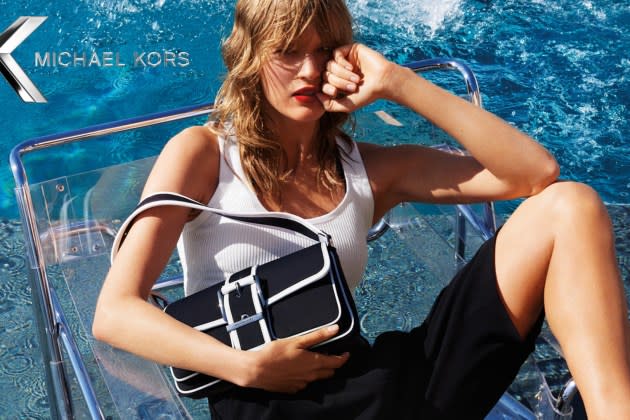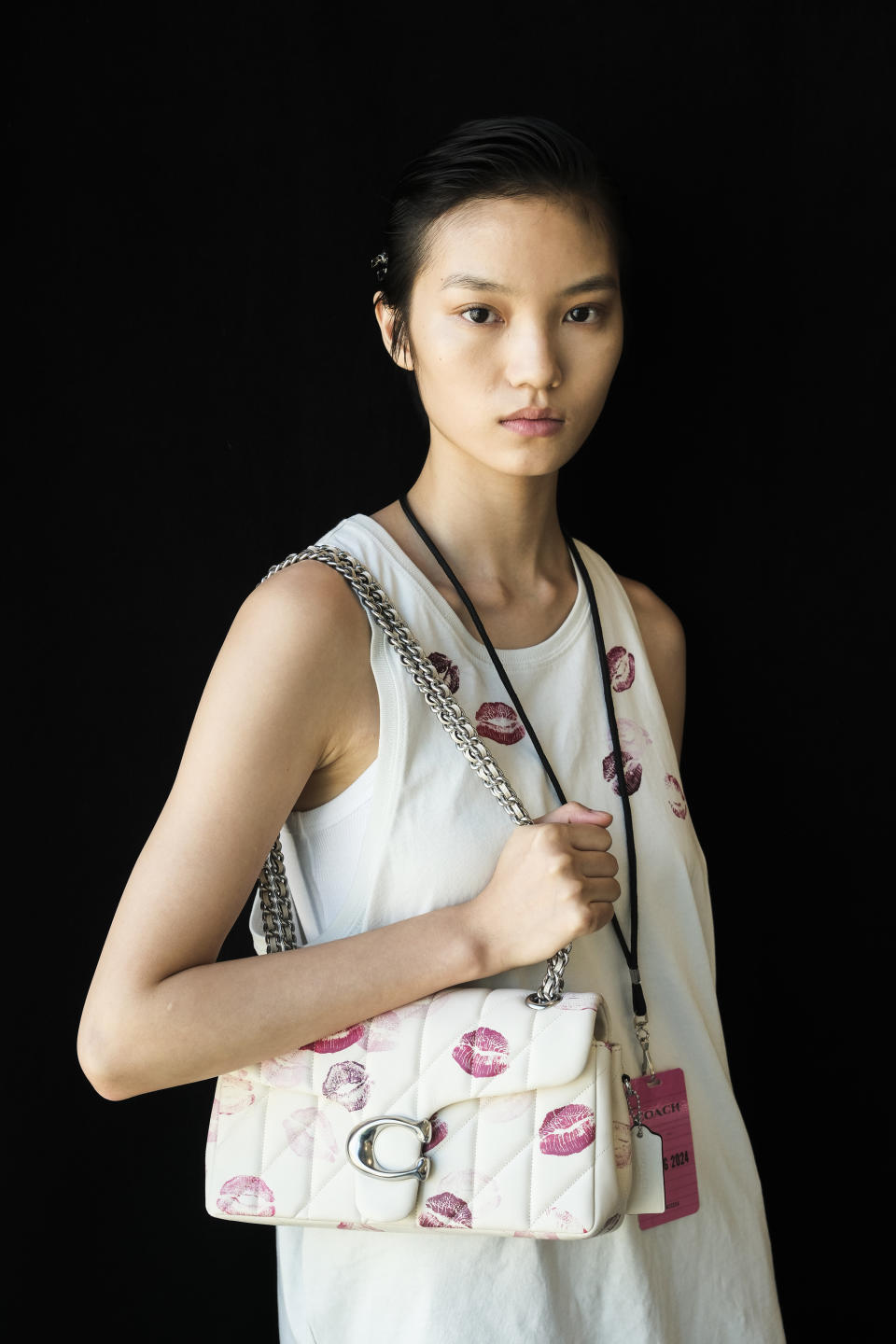The Dream of ‘an American LVMH’ Dims With FTC Challenge to Tapestry and Capri Merger

The American fashion industry has long dreamed of building a multi-branded mega player along the lines of LVMH Moët Hennessy Louis Vuitton or Kering.
But even if it was an elusive dream — complicated by the realities of dealmaking, brand building and consumer whimsy — it seemed like a dream worth dreaming.
More from WWD
Preview: Ralph Lauren Fall 2024 Is a Return to the Office and a Subtle Evolution
Usher, Emily Blunt, Anya Taylor-Joy Sparkle at Tiffany & Co. Blue Book Event in L.A.
Michael Kors Paris Pop-up Spotlights New Handbag With Swimming Pool Theme
Now, the Federal Trade Commission’s challenge to Tapestry Inc.’s $8.5 billion takeover of Capri Holdings is signaling that regulators are going to take a very hard look before allowing any company like that to come together.
“What the FTC is saying is, what Bernard Arnault has built with LVMH is and what Kering Group is and what Richemont is — that’s just never going to happen in America,” said attorney Jonathan Lazarow, founding member and co-chair of Ambrose, Mills & Lazarow’s Corporate Group.
“They don’t value it. They don’t see it the same way,” Lazarow said. “The FTC doesn’t view those luxury groups in the same way that the luxury groups view themselves. They’re about creating environments where artists could create commercial art — and [the regulators] don’t see it.”
Instead, the FTC is seeing a competitive threat that could raise prices and leave consumers with fewer options if Tapestry is able to bring together its brands, Coach, Kate Spade and Stuart Weitzman, with Capri’s portfolio of Michael Kors, Versace and Jimmy Choo.
Whether because of politics or an antitrust evolution, the FTC seems to have teeth again — at least when it comes to the fashion industry.
That complicates life for other dealmakers looking to make their own move to reshape the industry.
For instance, Richard Baker’s continuing push to buy Neiman Marcus and combine it with Saks and create a luxury department store with a new kind of scale now has a new gauntlet to run.
Lazarow said if he were asked to advise on that deal, he would ask: “What are you trying to create and how can we create a combined entity that demonstrates that we’re not hurting competition?”
It’s a question that is on the minds of bankers and dealmakers throughout an industry that has gotten used to what was effectively a rubber stamp from regulators.
“It scares the s–t out of me,” said one investment banker who works in the fashion space and asked not to be named. “If you’re going to push back on this, you’re going to push back on anything.
“Anything where it’s a merger where it can be viewed as going deeper into the same vertical, we’re very worried,” the person said. “The reality is, this isn’t a necessity. If you cut it, [Tapestry and Capri] have relatively small market share in the broader pie.”
But the FTC has chosen to judge the deal within the context of the “accessible luxury” sector — a definition of the market that critics see as too narrow.
The public version of the FTC’s suit redacts key figures on market share, but makes clear that regulators see the deal as creating a “colossus” with the brands collectively “dwarfing all other market players.”
Relying on new regulatory guidelines established last year, the suit also points to Tapestry’s “pattern and strategy of serial acquisitions.”
“The proposed acquisition builds on a deliberative, decade-long M&A strategy by Tapestry — and is just one in a string of acquisitions for Tapestry to achieve its goal to become the major American fashion conglomerate,” the FTC’s suit said.
Until last week, becoming “the major American fashion conglomerate” was more or less the goal of most of the industry, which was seen as something of a low-priority target for regulators.
“Historically, the last several decades, this is not the sort of a deal that probably would’ve been challenged,” said antitrust attorney Barry Barnett, a partner at Susman Godfrey. “But that’s mainly because the FTC and the antitrust division are reverting to historical form and that they’re becoming more assertive in enforcing the antitrust laws.”
While the more assertive FTC move has some observers wondering why the government is fretting over mid-priced handbags, Barnett said the nature of the market and whether the goods were discretionary or not would not likely sway a judge.
“I would imagine with the court that it’s a market that people value and they pay money for the goods, and they deserve a competitive environment,” he said.
One prominent competitor in fashion, who didn’t want to be identified talking about a “third rail” topic, said: “The FTC is largely living in an ‘anachronistic paradigm,’ ignoring the growth of new media and consumer channels, as well as global competition. They are pretending like TikTok, Shein, Instagram and numerous other consumer touch points don’t exist.
“The FTC thinks that they are protecting consumers from price gouging and such,” the source said. “What they are more likely doing is dooming all of the accessible luxury brands within both Tapestry and Capri to falling behind upstart competitors.
“I should be happy about the FTC’s move to block the merger,” they said. “In practice, however, I am not, as I am more concerned that the FTC is blocking mergers without fully understanding how business and commerce works.”
One of the key issues that is still unclear is exactly how the FTC is defining the market. The term “accessible luxury” can mean different things to different people.
The more market share Tapestry and Capri have in regulators’ definition of the market, the more likely the deal is going to be blocked.
Regardless, Coach is credited as the inventor of the idea of accessible luxury and both Kate Spade and Michael Kors are certainly players.
Neil Saunders, managing director of GlobalData, said Tapestry and Capri together command 10.3 percent of the U.S. market for accessibly priced and luxury handbags — a portion that would surely go up if luxe bags were excluded.
But Saunders argued that the FTC was misunderstanding how the market operates in fashion.
“There’s actually an enormous amount of competition in the market,” he said. “You have to only walk around Macy’s…there are over 100 handbag brands to buy from in the market at the accessible level.
“This acts as a deterrent for future acquisitions, especially at scale because really what the FTC has signaled is that it doesn’t like the creation of bigger conglomerates,” Saunders said. “The FTC is becoming a bit of a pain for American companies. And it’s doing a disservice in my view to the country. It’s not looking out for the interest of our firms and our ability as a country to generate wealth and that is a very serious question.”

As the first big case in fashion in years, the Tapestry-Capri decision could help establish just what will fly and what won’t.
Susan Scafidi, founder and director of the Fashion Law Institute at Fordham Law School, pointed to the forward-looking element of the case against the deal.
“Perhaps the FTC’s furthest reach in its complaint is that because Tapestry may attempt to acquire additional brands after a merger with Capri, it should be stopped now,” Scafidi said. “To me, that argument reads like a sequel to the Spielberg movie ‘Minority Report,’” where police use clairvoyants to arrest people before they commit crimes.
“Maybe Michael Kors could play himself in the Tom Cruise role,” she joked.
But the script could change the narrative in fashion, an increasingly global industry with mega players growing only larger and looking to press their advantage from New York to Paris to Shanghai.
A combined Tapestry and Capri would generate about $12 billion in annual sales — a big haul for the American fashion scene, but well behind LVMH, which logged revenues of 86 billion euros last year, and still lagging Kering at 20 billion euros and Richemont at 20 billion Swiss francs.
“Given the global nature of the fashion industry, the fact that a merged Tapestry-Capri could eventually become an American analogue to the European luxury conglomerates is arguably pro-competitive,” Scafidi said. “The new group could provide a counterweight to LVMH, Kering and Richemont, albeit at a somewhat different price point, increasing competition with regard to such things as acquisition of retail real estate and talent.”
Tapestry might not compete with LVMH for customers, but they are surely vying for the same storefronts and use size to good effect in negotiations with landlords.
However the case pans out, the landscape has now been reset.
“There’s an expectation out there that any deal of size and scale in the retail landscape, that the government’s going to take a look at it,” said David Shiffman, partner and co-head of the consumer retail group Solomon Partners. “But that is not specific to retail. They’re not singling out retail. They are looking at all sectors.
“The government has told us, ‘Hey, we’re going to keep an eye on what impacts the consumer.’ Fine,” Shiffman said “So each of us as advisers are asking the right questions, looking at the right issues in order to be in line with the regulations. Everybody’s just doing their job.”
But the stakes of the job — for everyone — have just gone up.
Best of WWD

 Yahoo Finance
Yahoo Finance 